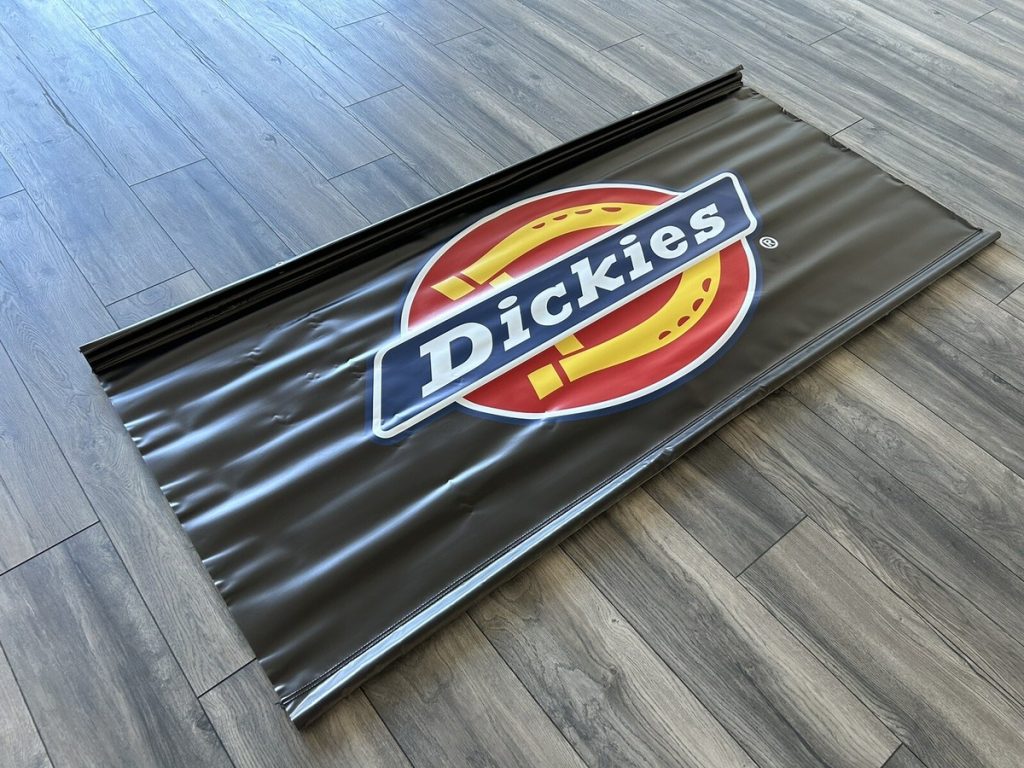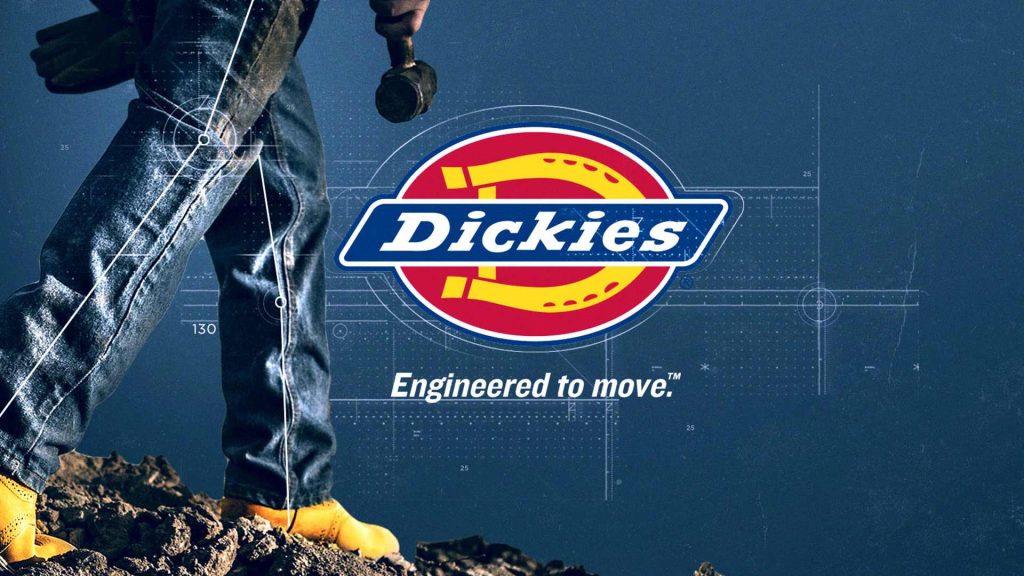
When people talk about workwear that has crossed over into mainstream culture, one name almost always comes up: Dickies. What started in Fort Worth, Texas in the 1920s as a practical brand making bib overalls for farmers and mechanics is today a global fashion and lifestyle icon. The journey of Dickies is as rugged and fascinating as the heavy-duty cotton twill fabric that made its pants so durable. This is a brand that managed to remain true to its roots in blue-collar workwear while simultaneously becoming a streetwear and skateboarding essential, adopted by rappers, skaters, fashion designers, and youth subcultures across the world.
Dickies is not just a clothing brand—it’s a symbol. For some, it represents authentic American labor. For others, it is rebellion and underground street culture. And in the 21st century, it stands at the intersection of heritage and hype—a rare achievement for any fashion label.
The Early Years: Birth of a Workwear Giant
Dickies was founded in 1922 by C.N. Williamson and E.E. “Colonel” Dickie under the name Williamson-Dickie Manufacturing Company. Their mission was straightforward: produce rugged, dependable workwear that could survive the harsh conditions faced by farmers, oil workers, and construction crews in Texas.
The earliest product was the bib overall, made of thick duck canvas and twill fabrics. These were designed to withstand long hours of physical labor, dirt, and wear. At a time when many clothing options for workers were poorly constructed, Dickies quickly earned a reputation for toughness and reliability.
By the 1930s and 40s, Dickies was supplying workwear not only across Texas but to multiple states in the U.S. During World War II, the U.S. government contracted Dickies to produce millions of uniforms for the armed forces. This massively expanded the company’s reach and solidified its reputation for durable, functional, no-nonsense clothing.
Post-War Expansion: Workwear for Every American
After WWII, Dickies grew into one of the largest workwear manufacturers in the United States. Their signature pieces—overalls, coveralls, work shirts, and sturdy pants—were adopted across industries. Farmers wore them in fields, mechanics wore them in auto shops, and construction crews trusted them on job sites.
The defining product that emerged during this time was the Dickies 874 Work Pant, introduced in 1967. Made of a poly-cotton blend with stain- and wrinkle-resistant properties, the 874 became the flagship product of the brand. Affordable, rugged, and designed with a straight-leg silhouette, the 874 embodied everything Dickies stood for.
To this day, the 874 remains the company’s best-seller, with hundreds of millions sold worldwide.

Design Philosophy: Built to Last
Dickies’ success rests on a few simple but powerful design principles:
- Durability over trends
Every product is designed to withstand abuse—friction, grease, dirt, bending, stretching. - Functional simplicity
Straight cuts, roomy fits, reinforced seams, and practical pocket placement are standard. - Timelessness
Neutral colors like navy, khaki, black, brown, and gray ensure that the clothes stay relevant. - Affordability
Dickies was never luxury—it was workwear for the masses. This affordability later became a major reason for its adoption by youth cultures.
Subculture Adoption: From Work Sites to the Streets
The most fascinating part of Dickies’ story is how it leapt from industrial workplaces to global street culture.
Skateboarding
In the 1980s and 90s, skateboarders discovered Dickies pants. The 874s were baggy enough for movement, strong enough to survive falls, and cheap enough to replace when ripped. Skaters loved how the fabric stiffened and aged over time, developing a unique patina.
Brands like Vans and Thrasher often featured skaters wearing Dickies, and eventually, Dickies launched its own skateboarding line, sponsoring pro skaters.
Hip-Hop and West Coast Culture
At the same time, West Coast rappers and lowrider communities in Los Angeles embraced Dickies. The clean, crisp look of a khaki 874 pant with a white tee and flannel shirt became a signature outfit. Rappers like Ice Cube, Snoop Dogg, and Cypress Hill popularized this look in music videos. Dickies became part of the uniform of Chicano and gang culture in LA—representing toughness, resilience, and authenticity.
Punk and Grunge
In the UK, punks and grunge kids adopted Dickies workwear as part of their anti-fashion statements. Oversized coveralls and work pants became symbols of rebellion.
Dickies Goes Global
By the late 20th century, Dickies was no longer just an American workwear brand—it was international.
- In Japan, Dickies became a fashion phenomenon. Japanese consumers treated Dickies as a premium, stylish import. The “Dickies Japan” line still today offers slimmer cuts, exclusive fabrics, and fashion-forward styles not available in the U.S.
- In Europe, Dickies gained traction among punks, mods, and later streetwear enthusiasts.
- In Latin America, Dickies pants became a street staple, associated with urban toughness.
This global adoption cemented Dickies’ dual identity: a practical, affordable choice for workers, and a cultural icon for youth movements.

High Fashion Meets Workwear
The 2000s and 2010s brought a new chapter: fashion designers began collaborating with Dickies.
- Supreme x Dickies brought the work pant into the streetwear luxury scene.
- Stüssy, Vans, Brain Dead, and Opening Ceremony all released collaborative Dickies lines.
- Even high-fashion houses like Givenchy have nodded toward Dickies-inspired silhouettes.
This transition from job sites to runways is what makes Dickies unique—it managed to become both heritage workwear and a fashion trend without losing credibility.
The Dickies 874: A Closer Look
The 874 deserves its own spotlight. Why has it lasted for more than 50 years with essentially the same design?
- Fabric: A 65/35 poly-cotton blend—tough yet wearable.
- Fit: Straight-leg, slightly boxy, mid-rise waist.
- Features: Wrinkle-resistant, stain-release finish.
- Price: Affordable and widely available.
The 874 has been styled in countless ways: skaters wear them loose with Vans, rappers pair them with oversized shirts, and fashionistas tuck them into boots or crop them for a tailored look. They are equally at home on a mechanic in Texas and a model on a Paris runway.
Cultural Influence
Dickies’ influence can be seen in movies, music, and art:
- Movies like Friday and Training Day showcased Dickies outfits as part of urban culture.
- Countless music videos from hip-hop to punk featured Dickies.
- Street art and photography immortalized the 874 + white tee + flannel combo.
Celebrities from Travis Scott to Kendall Jenner have been spotted in Dickies, showing its broad cultural reach.
Modern Identity: Dual Worlds
Today, Dickies thrives in two very different worlds:
- Industrial Workwear
It remains a trusted supplier for workers who need uniforms, coveralls, and durable gear. Hospitals, factories, farms, and workshops still rely on Dickies. - Streetwear & Fashion
Dickies pants, jackets, and shirts are sold in skate shops, fashion boutiques, and online hype stores. Influencers and designers reinterpret them every season.
This dual identity is rare. Carhartt has achieved something similar, but Dickies has arguably been more deeply entrenched in global streetwear.
Gender & Inclusivity
Dickies historically catered to men, but in recent decades has expanded women’s lines. Work pants, coveralls, and jackets are offered in women’s fits. At the same time, many Dickies items are inherently gender-neutral, embraced by all. This inclusivity has strengthened its modern relevance.
Sustainability & Criticism
Like many global brands, Dickies has faced criticism for moving manufacturing away from the U.S. to cheaper overseas factories. While this helped keep costs low, some felt it betrayed its heritage. Recently, Dickies has also begun addressing sustainability, introducing recycled fabrics and more eco-friendly processes.
Still, its reputation for quality and durability helps counter fast fashion wastefulness—after all, one pair of Dickies pants can last for years.
Dickies vs Competitors
- Carhartt: More rugged, outdoorsy, premium.
- Levi’s Workwear: More fashion-oriented.
- Dickies: Affordable, versatile, worn by both workers and trendsetters.
This balance between function and culture is Dickies’ strongest asset.
The Future of Dickies
As fashion trends increasingly embrace utility, minimalism, and authenticity, Dickies is well-positioned. Vintage resale markets thrive on Dickies pants and jackets. Younger generations see them not just as workwear, but as timeless, adaptable essentials.
Future growth will likely focus on:
- Sustainability.
- Expanding collaborations.
- Global streetwear dominance.
- Keeping heritage alive while innovating.

Conclusion
Dickies’ story is not just about clothing—it’s about identity, culture, and resilience. From Texas oil fields to Los Angeles streets, from skate parks to Paris runways, Dickies has been worn by workers, rebels, rappers, and designers alike.
Few brands can claim to be both a tool of labor and a symbol of fashion rebellion. That is what makes Dickies timeless. The 874 pant alone could tell a century’s worth of stories—of sweat, style, and survival.
In an era of fleeting fashion trends, Dickies stands as proof that authenticity lasts longer than hype. Whether you’re an electrician in Texas, a skater in Tokyo, or a fashion influencer in London, chances are Dickies has a place in your wardrobe. And that, more than anything, explains its rise from a humble workwear brand to a global cultural icon.
